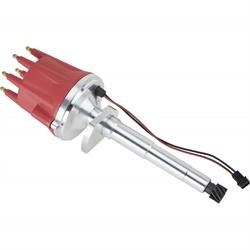Ford Flathead V8 Firing Order and Specs
Ford Flathead: Three Generations
The Ford “Flathead” V-8 was first introduced in 1932. When it debuted, it was the first of its kind to have the cylinder and block cast as one single piece. There were essentially three generations of the Flathead, easily distinguished by the number of studs that held the heads to the cylinders. From 1932-1938 the heads were held on by 21 studs, from 1938-1953 they used 24 studs. These two measured up at 221-239ci. And then there was the big boy, a 337ci 27 stud behemoth that was used in the Ford and Lincoln trucks. From 1937-1940, Ford also produced a 60HP, 137ci V8, that was used in some other applications.
The Ford Flathead ceased production in America in 1953,and followed suit in Canada and Australia a year later in 1954. However these are still a sought-after power plant, finding homes in period correct restorations as well as complete custom builds. As such, we here at Speedway continue to grow our inventory of parts for these engines. Also, since there is still such a strong desire for these engines, we thought it best to gather some of the more commonly used specifications for those of you who still sport a Blue Oval under the hood of your ride. Shown to the right we have a diagram illustrating the distributor rotation, cylinder orientation, and firing order. For this information, and more, why not pick up your own copy of the Ford Flathead Builders Handbook available from Speedway.
Torque Specifications and Sequences
The torque sequences for the each generation of heads are below. (NOTE: these values reflect a final torque, you should always use a gradual torque to final value.)






